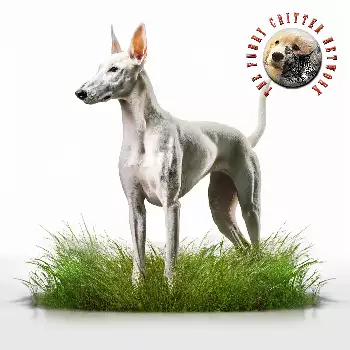The Ca Eibisenc is generally considered a healthy and robust breed with relatively few hereditary health problems compared to many purebred dogs. The breed benefits from centuries of natural selection on the island of Ibiza, where only the hardiest, healthiest dogs survived the harsh conditions and demanding work required of them. This natural selection process resulted in a breed with good genetic diversity and strong overall health. With proper care, nutrition, and veterinary attention, Ca Eibisenc typically enjoy lifespans of 12 to 14 years, with some individuals living even longer while maintaining good health and activity levels well into their senior years.
Despite the breed's general hardiness, prospective owners should be aware of several health conditions that can affect Ca Eibisenc. Hip dysplasia, a developmental condition where the hip joint does not form properly, can occur in the breed though it is less common than in many large breeds. This condition causes joint laxity that leads to arthritis, pain, and decreased mobility over time. Responsible breeders screen breeding stock through hip radiographs evaluated by the Orthopedic Foundation for Animals to reduce the incidence of hip dysplasia in their lines. Progressive Retinal Atrophy, an inherited eye disease that causes gradual vision loss leading to blindness, has been documented in the breed. Annual eye examinations by board-certified veterinary ophthalmologists help identify eye problems early.
Congenital deafness affects some Ca Eibisenc, particularly those with extensive white coloring. This hereditary condition is present from birth and cannot be reversed, though deaf dogs can live happy lives with appropriate accommodations and training using visual signals. Responsible breeders test puppies and breeding stock using BAER (Brainstem Auditory Evoked Response) testing to identify hearing deficits and avoid breeding affected dogs. Thyroid disorders, including hypothyroidism, occur in some lines and can cause weight gain, lethargy, and skin problems if left untreated. Regular thyroid screening helps identify and manage these issues before symptoms become severe.
Allergies, both environmental and food-related, affect some Ca Eibisenc, causing skin irritation, itching, and discomfort. The breed's thin coat and sensitive skin may make allergy symptoms more noticeable than in breeds with denser coats. Seizures have been reported in the breed, though they appear relatively uncommon. These may have various causes, and affected dogs often require medication to control the seizures. Axonal dystrophy, a rare neurological condition, has been documented in very few Ca Eibisenc, causing progressive weakness and coordination problems.
An important health consideration specific to sighthounds is their sensitivity to barbiturate anesthesia and certain other medications. Ca Eibisenc and related breeds metabolize these drugs differently than other dogs due to their low body fat percentage, and standard doses can be dangerous or even fatal. Veterinarians working with this breed must be aware of this sensitivity and adjust anesthetic protocols accordingly. Bloat, formally known as gastric dilatation-volvulus, poses a risk to deep-chested breeds including Ca Eibisenc. This life-threatening emergency occurs when the stomach fills with gas and potentially twists, cutting off blood supply. Owners should feed multiple smaller meals rather than one large meal, avoid vigorous exercise immediately before and after eating, and learn to recognize early symptoms of bloat.
Preventive veterinary care is essential for maintaining Ca Eibisenc health throughout their lives. Puppies should receive appropriate vaccinations on schedule to protect against serious infectious diseases. Regular veterinary examinations, ideally at least annually for healthy adults and more frequently for senior dogs, allow early detection of health problems before they become serious. Dental care, including professional cleanings and daily home tooth brushing, prevents periodontal disease that can affect overall health. Parasite prevention through year-round heartworm medication and flea and tick control protects against disease-carrying parasites. Weight management is crucial as excess weight stresses joints and organs, potentially shortening lifespan and reducing quality of life. With attentive care and preventive health measures, Ca Eibisenc can enjoy long, healthy, active lives as cherished family companions.
Common Health Issues
- Hip dysplasia, a developmental condition where the hip joint does not form properly, can occur in the breed though it is less common than in many large breeds.
- Responsible breeders screen breeding stock through hip radiographs evaluated by the Orthopedic Foundation for Animals to reduce the incidence of hip dysplasia in their lines.
- Annual eye examinations by board-certified veterinary ophthalmologists help identify eye problems early.
- Thyroid disorders, including hypothyroidism, occur in some lines and can cause weight gain, lethargy, and skin problems if left untreated.
- Allergies, both environmental and food-related, affect some Ca Eibisenc, causing skin irritation, itching, and discomfort.
Preventive Care & Health Monitoring
- Regular thyroid screening helps identify and manage these issues before symptoms become severe.
- Owners should feed multiple smaller meals rather than one large meal, avoid vigorous exercise immediately before and after eating, and learn to recognize early symptoms of bloat.
- Puppies should receive appropriate vaccinations on schedule to protect against serious infectious diseases.
- Regular veterinary examinations, ideally at least annually for healthy adults and more frequently for senior dogs, allow early detection of health problems before they become serious.
Regular veterinary check-ups and preventive care are essential for maintaining your Ca Eibisenc's health and longevity.

